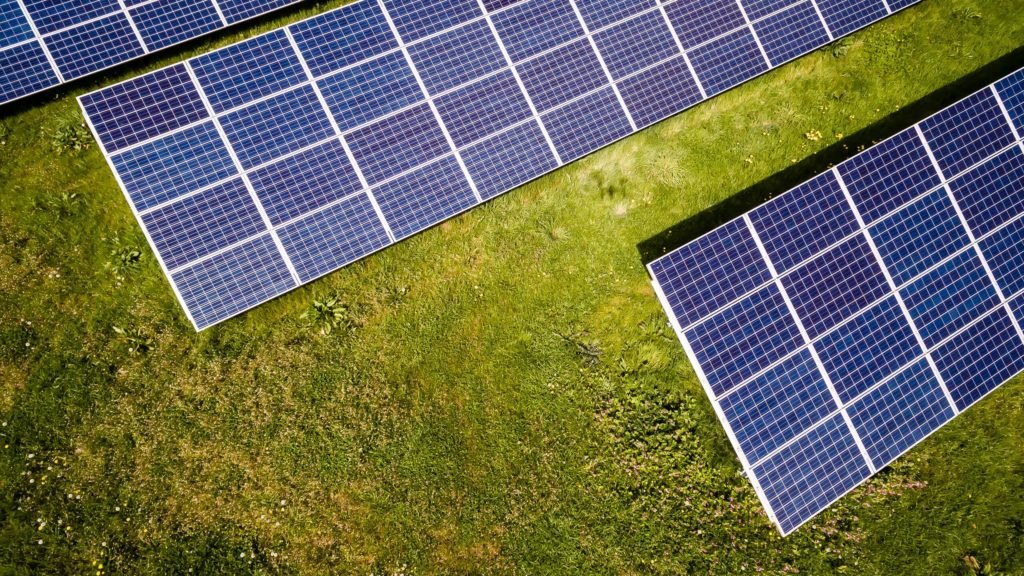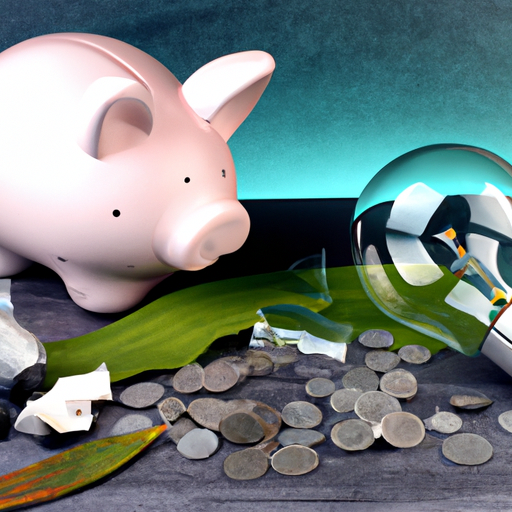If you’re like many homeowners, your monthly electricity bill might be causing some sweat–and not just because you’re battling the heat with a high-powered air conditioner. Now, imagine if you could cut that number down by a substantial amount, all without sacrificing your creature comforts. That’s exactly what you’ll learn in the “Effective Methods: How Can I Slash My Electric Bill in Half?” article. Through a mix of smart tech usage and some lifestyle tweaks, you’ll take control of your energy consumption and start seeing significant savings in no time! Let’s get that bill to look less scary, shall we?
Understanding Your Electricity Bill
Understanding your electricity bill is the first step towards implementing measures to slash your electric bill in half. Let’s take a step back and break down the fundamental components.
Breaking Down Basic Components of an Electricity Bill
Your bill typically includes a host of charges, such as the Customer Charge, the Energy Charge, and possibly the Demand Charge. The customer charge is essentially the fee that you must pay for being connected to the grid, a fixed cost regardless of your consumption. The energy charge is the actual cost of the electricity consumed during the billing period. Demand charges could also be part of your bill if you use a large amount of electricity in a short period.
Coefficient of Utility Rates
The utility rates play an integral role, and they can vary greatly depending on your location, your energy provider, and the time of year. These rates are a measure of the cost you incur for each kilowatt-hour consumed. Understanding these rates can help you grasp why your bill fluctuates, even if your consumption remains somewhat constant.
Analyzing Your Monthly Consumption Patterns
Knowing your utility rates is useful, but what’s more critical is understanding your consumption patterns. By tracking your usage over time, you can identify patterns and trends which can help you understand which appliances are using the most electricity and when your consumption peaks.
Conserving Energy in Summer and Winter
The changing seasons usually bring about fluctuating energy demands. Here’s how to keep your consumption in check in both summer and winter.
Effective Use of Air Conditioners and Heaters
Air conditioning in the summertime and heating in the winter can be particularly energy consuming. To enhance their efficiency, regular maintenance is key. Additionally, adopting habits, such as keeping doors and windows shut when these units are running, can aid in conserving energy.
Insulation Guide to Minimize Heat Wastage
Insulating your home can make a significant difference in your energy consumption. Good insulation helps keep your home warm in the winters and cool in summers, reducing the load on your heating and cooling systems.
Alternative Natural Ventilation Methods
Natural ventilation is an excellent method for reducing reliance on air conditioning during warmer months. It involves the use of windows, doors, vents, and other openings to allow air movement throughout your home.

Investing in Energy Efficient Appliances
It might be time to replace your old appliances with energy-efficient ones.
Selecting Energy Star Appliances
Look for appliances with the Energy Star label. These appliances meet strict efficiency guidelines set by the U.S. Environmental Protection Agency and the Department of Energy and use much less energy than standard models.
Predicting Annual Energy Consumption of New Appliances
Before buying a new appliance, think about its energy consumption over the course of a year. The EnergyGuide label provides an estimate of the appliance’s yearly energy use and compares it with other similar models.
Making Older Appliances More Efficient
If replacing your appliances isn’t a viable option, there are still ways to make older appliances more energy-efficient. Regular maintenance, proper usage, and adding energy-saving accessories can all help towards this goal.
The Wonders of LED Lighting
Switching to LED lighting can significantly lower your electric bill.
Comparing Conventional Bulbs with LED Bulbs
LED bulbs are far more energy-efficient than conventional bulbs. They provide the same amount of light while using a fraction of the energy and have a much longer lifespan.
Understanding Energy Savings from LEDs
Switching to LEDs can result in substantial energy savings over time. Given their long lifespan and lower energy use, the return on investment from LEDs is significant.
Next-Level Savings: LED Dimming Switch
Adding a dimming switch can further enhance the energy savings from LEDs. By adjusting the level of light when you don’t need full brightness, you can use less energy and extend the life of the bulb.
Smart Use of Home Electronics
Managing home electronics efficiently can lead to significant energy savings.
Proper Usage of Standby Mode
Many electronic devices continue to consume electricity even in standby mode. Unplugging devices or using a power strip to turn devices off can diminish this waste.
Understanding Consumption of Various Electronic Devices
Different devices have different energy consumption levels. Familiarizing yourself with the energy demands of your devices can help you manage your usage more efficiently.
Energy-efficient Use of Computers and Entertainment Systems
Computers and entertainment systems can be significant energy drains. Simple steps, like adjusting power settings, shutting down instead of using sleep mode, and unplugging devices not in use can lead to substantial savings.
The Power of Solar Panels
Solar panels might be a considerable investment, but they can bring immense savings on your electric bill.
Assessing Solar Suitability of Your Property
Before investing in solar panels, it’s vital to assess the solar suitability of your property. The positioning of your home, the size of your roof, and local weather conditions can all affect the efficiency of solar panels.
Calculating Long-term Savings from Solar Panels
While the upfront costs of solar panels can be significant, the long-term savings are substantial. They can drastically reduce or even eliminate your electricity bill and, in some cases, you can even sell excess power back to the grid.
Exploring Local Incentives for Solar Use
Many local and national programs incentivize the use of solar power. These programs can help offset the initial investment cost and make solar power more affordable.
Lowering Water Heating Costs
Water heating costs can make up a significant portion of your electricity bill. Here’s how to lower those costs.
Choosing an Efficient Water Heater
An energy-efficient water heater can drastically reduce your energy consumption. Look for models with high Energy Factor (EF) ratings, which means they convert a higher amount of energy into heated water.
Lowering Your Water Heater Thermostat
Lowering the temperature on your water heater thermostat can also reduce energy consumption. Each 10-degree reduction can save about 3 to 5 percent on your energy costs.
Insulating Your Water Heater Tank
Insulating your water tank can reduce heat loss and potentially save on water heating costs.
Take Advantage of Off-Peak Hours
Many utility companies charge less for usage during off-peak hours.
Understanding Peak and Off-Peak Hours
Peak hours are when demand for electricity is highest, usually during the day. Prices during these times can be much higher compared with off-peak periods like late at night or early in the morning.
Appliance Use Strategy During Off-Peak Hours
You can save on your electricity bill by running dishwashers, washing machines, and dryers during the off-peak times when rates are lower.
Meter Programming for Maximum Savings
Some digital meters allow you to program your usage according to the time of day. By aligning your electricity consumption with off-peak hours, you can achieve significant savings.
Exploring Alternative Energy Sources
Alternative energy sources such as wind, geothermal, and hydroelectric power can be viable options if you desire to be more energy-efficient and kinder to the environment.
Wind Energy Systems
Small wind energy systems can provide a great deal of electricity, depending on the wind speed and the turbine’s size. It might be an attractive option if you have a large property in a windy area.
Geothermal Energy Options
Geothermal energy harnesses heat from beneath the Earth’s surface. Though the initial costs can be high, the system can lead to profound savings in the long run and is virtually maintenance-free.
Hydroelectricity for Homes
If you have a flowing water source on your property, small hydroelectric power systems might be a feasible means to produce electricity.
Embracing Energy Saving Habits
Adopting energy-saving habits is a crucial part of reducing your electricity bill.
Teaching Kids to Be Energy Conscious
By educating your children about energy conservation, you can instill lifelong habits that will help them become more conscientious users of energy.
Cultivating Energy-efficient Daily Routines
Small changes like turning off lights when not in use, running appliances at full load, and using cold water for laundry can result in substantial savings.
Regular Property Maintenance to Avoid Energy Wastage
Regular property maintenance can prevent energy wastage. By ensuring that your home is well-insulated, appliances are running efficiently, and leaks are repaired, you can avoid wasting energy and reduce your electricity bill.
In conclusion, by understanding your electricity bill, investing in energy-efficient appliances, using home electronics smartly, considering renewable energy sources, and embracing energy-saving habits, you can drastically reduce your electricity bill.


